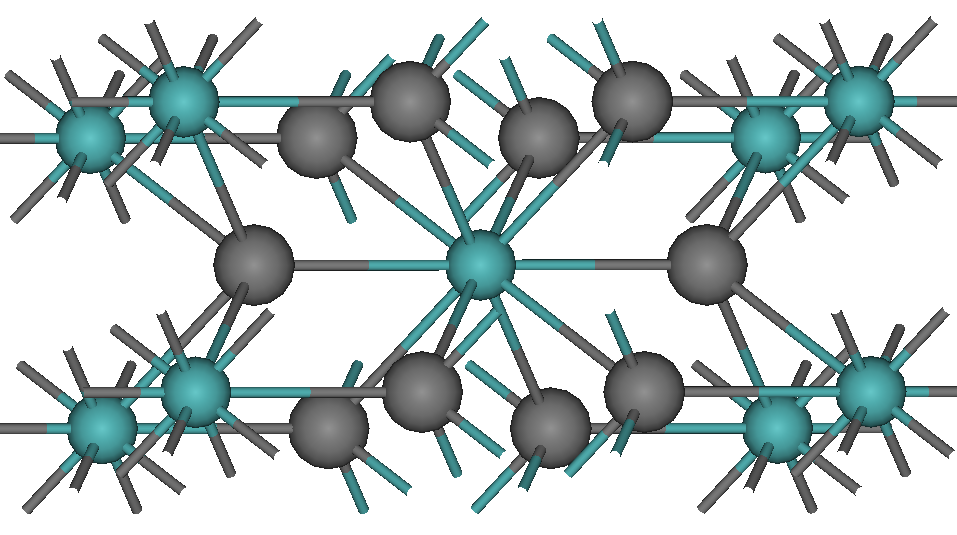Professional industry ceramic supplier, silicon nitride, silicon carbide, aluminum nitride and any other kinds of ceramics.
Overview of molybdenum disilicide MoSi2
Molybdenum disilicide (MoSi2 or molybdenum silicide) is an intermetallic compound. It is a silicide of molybdenum and a refractory ceramic. It is mainly used for heating elements. Moderate density, melting point 2030℃, conductive. At high temperatures, it forms a silicon dioxide passivation layer to protect it from further oxidation. The thermal stability and high emissivity of MoSi2 make this material, together with WSI2, very attractive for applications as high emissivity coatings for thermal shields entering the atmosphere. MoSi2 is a gray metal appearance material with tetragonal crystal structure( α-Modification); its β-The modification is hexagonal and unstable. Insoluble in most acids, but soluble in nitric acid and hydrofluoric acid.

Although MoSi2 has excellent oxidation resistance and high Young's modulus at temperatures above 1000°C, it will become brittle at lower temperatures. In addition, it loses its resistance to creep above 1200°C. These properties limit its use as a structural material, but can be offset by using it as a composite with another material.
Application of molybdenum disilicide MoSi2
Molybdenum disilicide MoSi2 based materials are usually made by sintering. Plasma spraying can be used to produce its dense integral and composite forms; Due to its rapid cooling, materials produced in this way may contain a certain proportion of β- MoSi2 。
Molybdenum disilicide heating elements can be used for temperatures up to 1800 °C and electric furnaces used in laboratories and production environments for glass, steel, electronics, ceramic production and material heat treatment. Although these components are brittle, they can operate at high power without aging, and their resistivity will not increase with operation time. Due to the destruction of passivation layers, their maximum working temperature must be reduced in an atmosphere with low oxygen content.
Other ceramic materials used for heating elements include silicon carbide, barium titanate and lead titanate composites.
Molybdenum disilicide is used as a contact material in microelectronics. It is usually used as a shunt on polysilicon lines to increase its conductivity and signal speed.
Molybdenum disilicide MoSi2 price
Molybdenum disilicide MoSi2 price changes randomly with production cost, transportation cost, international conditions, exchange rate, molybdenum disilicide MoSi2 market supply-demand relationship and other factors. Tanki new materials Co.,Ltd. aims to help industries and chemical wholesalers find high-quality and low-cost nano materials and chemicals by providing a full range of customized services. If you are looking for molybdenum disilicide MoSi2 products, please feel free to contact to obtain the latest price of molybdenum disilicide MoSi2.
Molybdenum disilicide MoSi2 supplier
As a global MoSi2 supplier of molybdenum disilicide, Tanki new materials Co.,Ltd. has rich experience in the performance, application and cost-effective manufacturing of advanced and engineering materials. The company has successfully developed a series of powder materials (titanium silicide, tantalum silicide, zirconium silicide, etc.). High purity targets, functional ceramics and structural devices, and provide OEM services.
Technical Parameter of Molybdenum Silicide MoSi2 Powder
| Product Name | MF | Purity | Particle Size | Melting Point | Density | Color |
| molybdenum silicide | MoSi2 | 99% | 5-10um | 2030℃ | 6.24g/cm3 | dark gray |
Chemical Composition of Molybdenum Silicide MoSi2 Powder
| MoSi2 | Mo | Si | C | S | Fe | S | Ni |
| >99% | >60% | balance | 0.2% | 0.02% | 0.19% | 0.015% | 0.05% |
